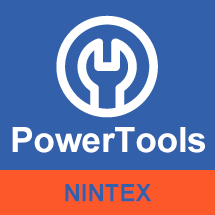
PowerTools for Nintex Getting Started
PowerTools for Nintex Quick Start Guide

Installation
PowerTools can be added to your Nintex Workflow Cloud environment by adding an Xtension and creating a connection. View the following video for a step-by-step walkthrough:
Setup
The setup process is as follows:
1. Register
Browse to the Apptigent user portal at https://portal.apptigent.com. Click the Create an Account link in the upper right then follow the steps. Once you receive a confirmation email and have completed the verification step, login and select My Organization from the drop-down menu next to your user name.
Click the Billing tab, fill out the credit card information and save your changes. If you are unable to provide a card, open a support case by clicking on the Support link in the top menu and a support engineer will work with you to set up alternate billing arrangements (skip the following steps #2 and #3 as Customer Support will need to generate an app and subscription for you).
2. Create an App
After updating the organization billing details, select Apps from the top menu, then click the Create new app button and give it a title. None of the other fields are required, they can be left blank. Click Submit when finished.
When the app creation process has finished, the Client ID value will be displayed under Credentials. Click the Show button and copy this value as it will be needed in your Nintex Workflow Cloud environment.
3. Subscribe to a Plan
Click on API Products in the top menu then select PowerTools for Nintex. Select the desired plan, click the Subscribe button, then select the name of the app created in the previous step. Click Subscribe to finish.
4. Update Credentials
In your Nintex Workflow Cloud environment, go to Connections and click the Add New button. Select the Apptigent PowerTools connector, enter “PowerTools” as the connection name, then paste the Client ID from the customer portal app into the API Key field. Click Connect to complete the process.
You can now use PowerTools in workflows and forms by selecting the Apptigent PowerTools action category.
[NOTE: You will need sufficient permissions in Nintex to complete the final step, contact your tenant administrator if you require assistance]
Watch the following video for a complete walkthrough of the billing, app creation and subscription process:
Documentation
You can find interactive documentation for all PowerTools actions on the Customer Portal by selecting API Products from the top menu, clicking on PowerTools for Nintex, then selecting the “PowerTools Nintex” API from the left navigation menu.
All the available operations are listed on the left. Descriptions of input and output parameters are in the middle panel. The right panel contains the interactive testing tool, where you can see examples for each action and perform live tests in the browser (be sure to select the name of your app before invoking each action as the tool requires a valid Client ID).
Form Data Lookup Actions
PowerTools actions can also be used in forms via the Data lookup control but some additional configuration is required. Nintex Workflow Cloud treats external actions exposed by an Xtension as individual data sources. To use them in forms, it is first necessary to create a data source for each action. The process is as follows:
- From the Dashboard, open the Data sources panel from the left navigation and click the Add New button.
- Give the new data source a name (descriptive text with the Xtension name and action, something like “PowerTools – Convert Currency”, makes it easy to locate individual actions in the form designer). Provide a brief description, choose the Apptigent PowerTools connector, then select the desired action.
- Click the Save data source button to complete the operation.
- In the form designer, add the Data lookup control to the design canvas then click to configure.
- Click the Data source configuration button near the top of the configuration panel and choose one of the data sources created in the previous steps.
- Click the Add field button then select an input object. The panel will update and display the input parameter fields, which can then be configured as needed.
NOTE: Nintex expects all data sources to return a list of values; therefore, the rendered control is a drop-down. This has no bearing on the functionality of the data source that returns a single value or object; in a published or preview version of the form, simply click the drop-down arrow to see the result of the external operation, which Nintex then stores in the field value for use in formulas, variables or rules.
